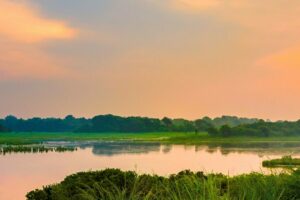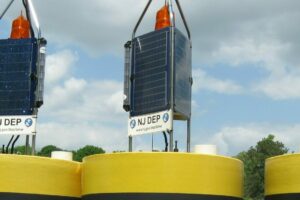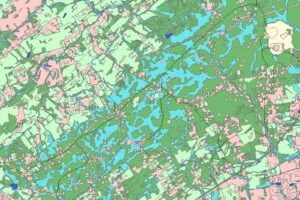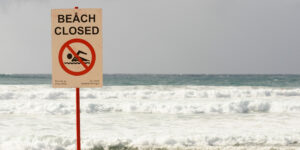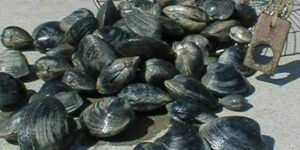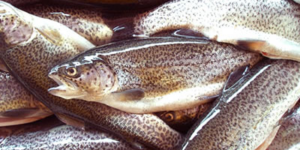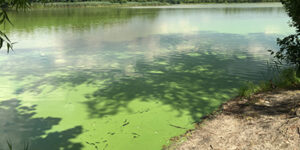
Water Quality Advisories and Reports
General information on the water quality assessment program and the Integrated Report. (Homepage)
Comprehensive water quality assessment report that determines the health of New Jersey’s water resources.
Access databases where publicly-available water quality data is stored. Description of DEP and non-DEP monitoring programs statewide.
Description and access DEP programs focused on protecting, preserving, and restoring water quality throughout the state.
DEP Geographic Information System (GIS) tools and data showcasing water quality information.
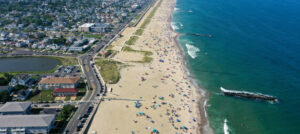
The principal source of water quality conditions in New Jersey is the Integrated Report that assesses state water quality conditions every two years. However, there are numerous other water quality advisories and reports that provide water quality conditions at a statewide level down to specific watersheds. These sources of information include trends, current water quality, watershed conditions, and historical information. All advisories issued by DEP are incorporated into the Integrated Report while the majority of the water quality reports are also included. Some water quality reports are based on data that do not meet the Integrated Report’s quality assurance requirements, but still provide important information on water conditions. These reports are usually published by watershed associations.
The tables below list the advisories with links to view water quality conditions. Additionally, a list of water quality reports, their organizations, and links to download the reports is available.
Water Quality Advisories
Local health departments in partnership with DEP, monitor recreational beach water quality from mid-May to mid-September. Each week water quality monitoring is conducted at approximately 195 ocean and 25 bay monitoring stations along the coast of New Jersey. On this web site, you will find current beach status, water quality sample results, reports of beach advisories and beach closings, information on other events that affect beaches and daily updates from DEP’s coastal surveillance flights.
DEP classifies shellfish growing waters and determines whether and how the harvest of shellfish from those waters must be restricted in order to protect the public from health risks associated with the consumption of shellfish. DEP has the authority to impose immediate shellfish harvest suspensions and restrictions to protect public health. In addition, DEP issues permits for shellfish harvesting; develops control plans; and sets requirements for shellfish license holders for the harvest, handling, and transport of shellfish. This ensures New Jersey harvested shellfish are safe for human consumption.
This website and booklet summarizes the marine, estuarine and freshwater fish consumption advisories for New Jersey. It provides you with information on how to reduce your risk by avoiding or limiting consumption of certain fish. It also offers guidance in how to prepare the fish you eat from local waters in ways that reduce your exposure to PCBs, dioxins and other contaminants.
DEP has enhanced its Monitoring and Response Strategy and developed a color-coded health alert index to provide the public with strong and clear guidance on suitable recreational activities in freshwater lakes and other water bodies impacted by harmful algal blooms. Exposure to cyanobacteria cells can cause a range of mild to moderate health effects, including rashes, allergy-like reactions, flu-like symptoms, gastroenteritis, respiratory irritation and eye irritation. Incidental ingestion of water containing the toxins these bacteria can produce, known as cyanotoxins, can result in more serious health effects such as liver toxicity and neurological effects. Children and pets are more vulnerable because they ingest more water in relation to their weight.
Water Quality Reports
| Monitoring Organizations | Description | |
|---|---|---|
| Department of Environmental Protection Reports | ||
| Water Environmental Trends | DEP environmental trends reports on water quality, benthic macroinvertebrates, fish communities, algal communities, shellfish, groundwater, and beach monitoring | |
| Water Quality Trends in Nutrients in New Jersey Streams, Water Years 1971-2016 | Water quality trends report of nutrients from 1971-2011 at 28 monitoring stations. Trend tests were performed on nitrate, total nitrogen, and total phosphorus using two different statistical methods: Weighted Regressions on Time, Discharge, and Season and Seasonal Kendall tests. | |
| Rules and Regulations | Access current DEP rules and regulations, rule proposals, adoptions, and notices. | |
| New Jersey Water Monitoring & Assessment Strategy | The monitoring and assessment strategy is based on DEP’s evaluation of its ambient water monitoring programs based on the Department’s water information needs, EPA Guidance, and the results of a 1999 EPA audit of New Jersey’s water programs. The resulting document contains long-term strategies for ambient water monitoring and assessment programs that are critical in maintaining, protecting and restoring the state’s water resources. | |
| New Jersey’s Vision Approach | New Jersey’s Vision Approach is designed to accomplish both federal and State water quality goals through statewide ambient water quality monitoring, water quality standards that protect and support designated uses of New Jersey’s waters; assessment of water quality to determine support of designated uses; development, implementation and funding of strategies to protect and restore water resources; and communication and partnership with the public. | |
| New Jersey Nonpoint Source Management Program Plan | The Nonpoint Source Management Program Plan highlights the key actions that New Jersey, with its partners, will use to address water quality issues caused by nonpoint source pollution (NPS) to achieve water quality objectives. | |
| Harmful Algal Bloom (HAB) Freshwater Response and Annual HAB Reports | The purpose of the Response Strategy is to provide a unified statewide approach to respond to cyanobacterial HABs in freshwater recreational waters, from public recreational bathing facilities to sources of drinking water, and to protect the public from risks associated with exposure to cyanobacteria and related toxins. Also, annual reports on DEP’s responses to reports of suspected HABs. | |
| Combined Sewer Overflow (CSO) FAQ | Learn more about the CSO program and how CSO controls aim to reduce or eliminate their impact on the State’s waters. | |
| CCMP Beach Annual Summary Report | The Cooperative Coastal Monitoring Program (CCMP) is part of New Jersey’s Beach Monitoring Program designed to verify coastal water quality at recreational bathing beaches, provide public notification and investigate sources of water pollution to protect public health and safety. | |
| DEP Special Studies: | ||
| Nutrient Research | Nutrient related research studies completed by the Division of Science and Research include Brown Tide, atmospheric deposition, and the Nutrient Criteria Enhancement Plan. | |
| Mercury Research | Mercury related research studies completed by the Division of Science and Research include Mercury Fish Advisories, Mercury Task Force, and Mercury releases by air and soil. | |
| Barnegat Bay Studies | Multiagency research studies designed to fill in data gaps, address the improvement of water quality, and advance habitat restoration on the bay. The studies focused on the multiple stressors impacting the bay for the development of targeted and appropriate regulatory management strategies. The ten projects started in January of 2012 and continued in 2013 and 2014. | |
| Pere- and Polyfluoroalkyl (PFAS) Literature | General information on PFAS including what is PFAS, health effects, standards and regulation as well as PFAS in the environment, drinking water, and wastewater. | |
| New Jersey Periphyton Bioassessment | Multiple studies focused on understanding the relationship between natural conditions and loadings for determining the feasibility of using algal indicators for euthrophic conditions. | |
| Microplastics in the Aquatic Environment | Research on microplastics sources, occurrences and currently known risks. Review of current research to help evaluate and quantify the risk microplastics pose to aquatic life and ecosystems. | |
| Other New Jersey Reports | ||
| United States Geological Survey (USGS) | Numerous water quality publications and reports by New Jersey US Geological Survey. | |
| Delaware River Basin Commission (DRBC) Delaware River & Bay Water Quality Assessment Report |
Delaware River and Bay water quality publications including the biennial Water Quality Assessment Report. | |
| Pinelands Commission | Pinelands water quality, hydrology, watershed and landscape assessments, aquatic and wetland ecology, wetland identification and delineation, and resource management reports. | |
| Lake Hopatcong Water Quality Reports | Various water quality reports published by the Lake Hopatcong Commission. | |
| State of the Barnegat Bay Report | Water quality report on Barnegat Bay published by the Barnegat Bay Partnership. | |
| State of the Estuary Report | Water quality report on the New York/New Jersey Harbor published by the Harbor Estuary Program. | |
| Technical Report for the Delaware Estuary and Basin | Water quality report on the Delaware Estuary published by the Partnership for the Delaware Estuary. | |
| Delaware River Basin Wiki | An array of information on water quality in the Delaware River Basin collected by the Delaware Riverkeeper Network. | |
| Raritan Watershed Report Card | Water quality report card of the Raritan River Watershed based on data collected by the Raritan Headwaters Association. | |
| Great Swamp Report Card | Water quality report card of the Great Swamp Watershed based on data collected by the Great Swamp Watershed Association. | |
| Central New Jersey Subwatersheds Report Card | Water quality report card of the streams and tributaries in Central New Jersey based on data collected by the Watershed Institute. | |
| State of the Raritan Report | Water quality report on the Raritan River Watershed published by the Rutgers Sustainable Raritan River Initiative. | |
| Water Quality in the New Jersey Harbor and Tributaries | Water quality report of the New Jersey Harbor and tributaries based on data collected by the New Jersey Harbor Dischargers Group. |

